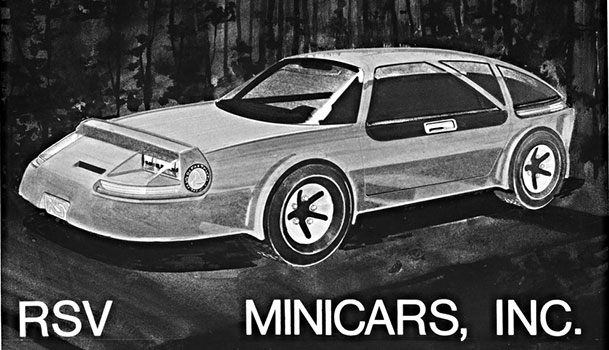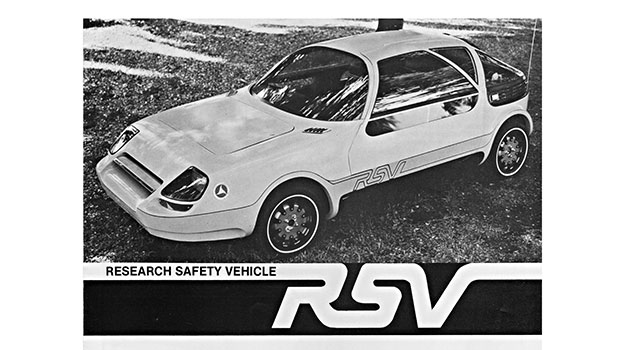With more cell phones in hand, alcohol in the bloodstream, and average miles per commute to travel, the sleepy and stressed out, drunk, and distracted humans behind the wheel have been deemed the most dangerous things on the road.
And the auto industry wants to remove them like a cancer.
Faced with the plights of modern driving—and the increasing death toll that’s resulted from them—carmakers, technology firms, and the government have all landed on the same solution: autonomous cars, they say, are the only way for humans to save themselves.
The three-way collusion has helped lead to an explosion of self-driving technology in the U.S. and abroad, with thousands of the experimental vehicles crawling the roads day and night to master the skills they’ll need to become mankind’s chauffeurs.
Once humans are cut loose from the wheel, roadway fatalities have been predicted to all but subside with the rise of the robo-cars, but in the past month alone, two people have perished at the hands of the technology. A woman was killed in Arizona after being struck by a self-driving vehicle that didn’t detect her crossing the road, while a California man died in a fiery wreck piloted by his autonomous SUV.
No doubt such tragedies are very much the exception. Autonomous cars have driven millions of miles and encountered relatively few accidents, let alone deadly ones. The technology is also very much in its infancy, with the total realization of its promised potential still years away. But to truly produce the future’s safest transportation, it may behoove us to look at the past.
The Safest Car Ever Built
Silicon Valley loves touting the idea of how impenetrable its computerized cars are, but by many measures, the world’s safest vehicle was already built—39 years ago.
It all began in the wake of the oil crisis of 1973, when gas prices were sent sky-high after an extended oil embargo imposed by most of the Middle East. The Department of Transportation (DOT) was still a relatively new agency, and Unsafe at Any Speed—Ralph Nader’s seminal report on automotive safety, or lack thereof—was still fresh on the minds of many Americans.
The fledgling DOT and its even-newer branch, the National Highway Traffic Safety Administration (NHTSA), were looking for a vehicle that could not only deliver on stricter fuel economy standards but also ensure its passengers were delivered safely home after every trip. To help find that Holy Grail, the then-5-year-old NHTSA came up with a modest proposal, asking automakers to imagine what the safest and most efficient vehicles on the road would look like 10 years down the line.
The 1975 announcement was a casting call of sorts, with the NHTSA ready and willing to fund the best solutions. By 1979, the agency had settled on two companies to back—New York-based engineering firm Calspan and General Motors Research Laboratories spin-off Minicars, Inc.—and was well on its way to implementing their ideas in a test fleet of more than 60 experimental vehicles.
While Calspan focused on modifying pre-existing cars, the Goleta, California-based Minicars presented an entirely new design, reimagining nearly every aspect of the automobile to form what would come to be known as the Minicar RSV—or “research safety vehicle.” Yet it wasn’t long before researchers gave the car another name: the safest vehicle ever made.

The four-passenger auto could withstand front or side impacts up to 50 MPH—at a time when most cars were tested at 35 MPH—with all of its occupants able to walk away from such a collision. It boasted an anti-skid braking system powered by radar, which could detect relative distance from other vehicles on the road and reduce the severity of unavoidable crashes. And it had run-flat tires capable of traveling up to 50 miles—at 50 MPH—after blowing out.
Its mid-rear-mounted four-cylinder engine—borrowed from a 1977 Honda Accord—was powered by a 5-speed manual transmission, fitted with a computer that could determine the best shifting positions for performance and fuel economy, and capable of getting 32 miles per gallon.
Innovations ranged from foam-filled steel sections meant to dissipate crash energy as they were crushed on impact to soft, flexible bumpers, hoods, and front fenders intended to absorb crash energy and minimize pedestrian harm. A collision at up to 10 MPH wouldn’t cause a scratch on the car; a crash up to 20 MPH resulted in mere cosmetic damage.
All told, the RSV was estimated to bring accident costs down by 75% nationwide, save thousands of lives each year, and “almost eliminate the country’s need for imported oil.”
By spring of ’79, it was trotted out to the public, with then-Transportation Secretary Brock Adams going on television to tout its myriad benefits. “I think they will build them,” he told NBC. “The technology in this vehicle is not technology that is impossible at all. I think it will be done, and I’m hopeful that by 1985 to 1990, it will be.”
The Safest Car Ever Destroyed
For a while, it seemed the government had every intention to make good on that promise, with the NHTSA going as far as hiring Bonanza star Lorne Greene to film a PSA on the RSV. (The catch, he told viewers at the end of the ad, was that the experimental car wasn’t up for sale, but he implored watchers to contact the Department of Transportation about making sure its technology made it to the road.)
With the car’s successes well-documented, then-NHTSA head Joan Claybrook was ready to demand more from commercial vehicles, setting ambitious national standards that called for 2,000-pound autos which could withstand crash tests at 40 MPH while accommodating four occupants.
But by the fall of 1980, a new president had been elected, and he had a new set of priorities.
The NHTSA’s safety program was halted in 1981 and—as was later revealed by a Freedom of Information Act request—the new administration quickly and quietly moved to have nearly every one of the 60-car RSV fleet destroyed.
The Reagan administration quickly and quietly moved to have nearly every one of the 60-car RSV fleet destroyed.
Three intact examples survived, spending a majority of the Reagan years parked in the DOT’s basement. Aboveground, Congress argued that a vehicle could not be both safe and fuel-efficient, despite the increasingly-rusty contrary evidence sitting just a few blocks away. Smaller, more fuel-friendly cars were declared unsafe and unfit for the road, as they were determined no match in a crash against the 3,500-pound gas guzzlers preferred by most Americans.
By 1990, the argument gained enough traction for the governing body to lower fuel economy standards in the name of safety—and for the DOT to more publicly (though still quietly) order the remaining RSV cars destroyed.
After being offered to the Smithsonian and spending a short stint at the University of Virginia’s School of Engineering for a few last experiments, the RSV that starred alongside Lorne Greene in the 1979 PSA was sentenced to death by crash test by then-NHTSA chief Jerry Curry. Housing no dummies and deploying no airbags—and therefore generating no data—in its final run, the car finally faced a crash it couldn’t endure, as it was rocketed into a concrete wall at a government facility in Ohio. With the last of the cars gone, Curry declared the technology officially obsolete, saying anyone who could have learned something from the vehicles would have done so by then.
Alternative Histories
The liquidation was not completely successful, however.
At the time of the wide-scale fleet wrecking, Minicars still had two RSVs on hand, with the company apparently deciding to hold on to the models rather than turn them over to the government in the wake of the destruction.
Indeed, the surviving examples remained a secret until they unexpectedly appeared at a 1996 asset sale in California, where they were purchased by local Frank Richardson, who was attempting to start his own crash-test company at the time. (After the NHTSA caught wind of the auction, they saw that the cars were refurbished, though Richardson still has the vehicles—and says they’re not for sale.)
Some of the technology sported by the futuristic design also lived on—including many aspects of its sophisticated braking system, which began popping up in Japan and Europe around the early 2000s.
But in many ways, the legacy of the RSV has been lost to time. Automakers are still striving to catch up to the 40-year-old innovations, while government agencies impose standards that fall far short of the experimental autos’ capabilities.
The NHTSA awards its 5-star safety rating to vehicles that can withstand 35 mile-per-hour crashes, a full 15 MPH lower than the RSV. And the average vehicle on the road got just 25.2 miles per gallon in 2016, according to the latest numbers filed by the Environmental Protection Agency—a far cry from the 32 miles per gallon boasted by the Minicar in 1979. Yet Curry was right. Despite its clear superiority, the technology is obsolete. Thanks to the destruction wrought by his self-fulfilled prophecy, no one was—or is—able to learn from the technology—and the safest era of automotive history will never repeat itself.
